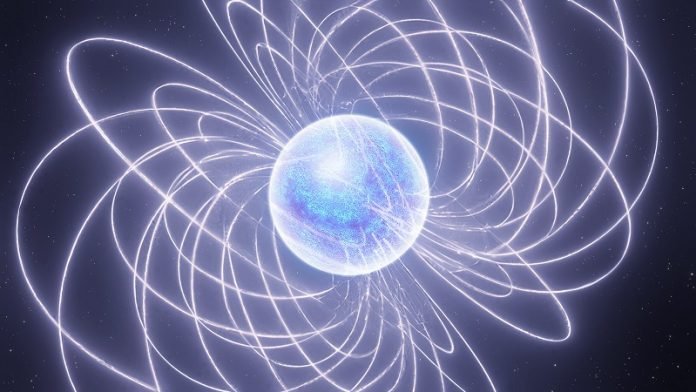
In the vastness of space, there are some truly astonishing phenomena, and one of them is the magnetar.
A team of international scientists, led by Michael Kramer and Kuo Liu from the Max Planck Institute for Radio Astronomy in Germany, has made a groundbreaking discovery about these fascinating stars.
Their research, published in Nature Astronomy, is shedding light on some of the universe’s most intriguing mysteries.
Firstly, what are magnetars? Imagine the core of a massive star that has collapsed into a dense sphere no more than 25 kilometers in diameter, but with a mass up to twice that of our sun.
This creates the most densely packed matter we know of in the universe, where electrons and protons are squeezed into neutrons.
There are over 3,000 neutron stars, like our sun, that we can observe as radio pulsars. They emit radio beams, and we can detect them from Earth when these beams point our way.
Magnetars are a special kind of neutron star. They have magnetic fields a trillion times stronger than Earth’s, and some have fields even 1,000 times stronger than that.
Out of about 30 known magnetars, six occasionally emit radio waves. Scientists think that magnetars could be the source of mysterious signals from space known as fast radio bursts (FRBs).
The team from the Max Planck Institute and the University of Manchester took a closer look at magnetars, examining their individual pulses in detail.
They found something surprising: magnetars, pulsars, and other neutron stars known as Rotating Radio Transients share a similar pulse structure.
Even more interestingly, they discovered that the timing of these pulses follows a universal pattern, related to the rotation period of the star.
This means a neutron star that rotates in a few milliseconds and one that takes nearly 100 seconds to rotate both follow the same rule. This insight is crucial because it tells us more about the process creating the radio emissions in these stars.
This finding is significant for understanding FRBs. Since the structures observed in magnetars and FRBs are similar, the team suggests that the sub-structures in FRBs could be linked to the rotation period of a magnetar. If this is true, it could help us understand where FRBs come from and how they are produced.
The team used the 100-meter radio telescope in Effelsberg for their observations and also looked at past data. Magnetars don’t always emit radio waves, so researchers have to be quick to catch them in action. This makes telescopes like the one in Effelsberg crucial for this kind of research.
For co-author Ben Stappers, the most thrilling part of this discovery is its potential to solve the puzzle of FRBs. If we can match the timing of FRBs to a magnetar’s rotation, it could prove that these bursts are indeed coming from magnetars.
The study not only advances our understanding of neutron stars but also opens new doors in the quest to unravel the enigma of FRBs. As Michael Kramer puts it, the search is now on, driven by this newfound knowledge, to explore deeper into the mysteries of the cosmos.
Source: Max Planck Society.



